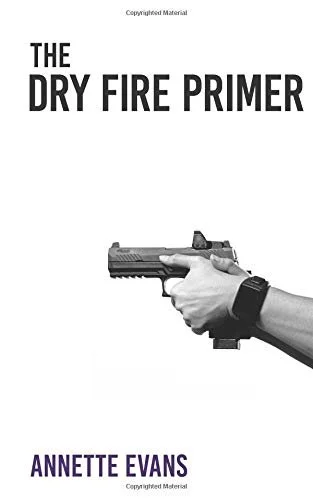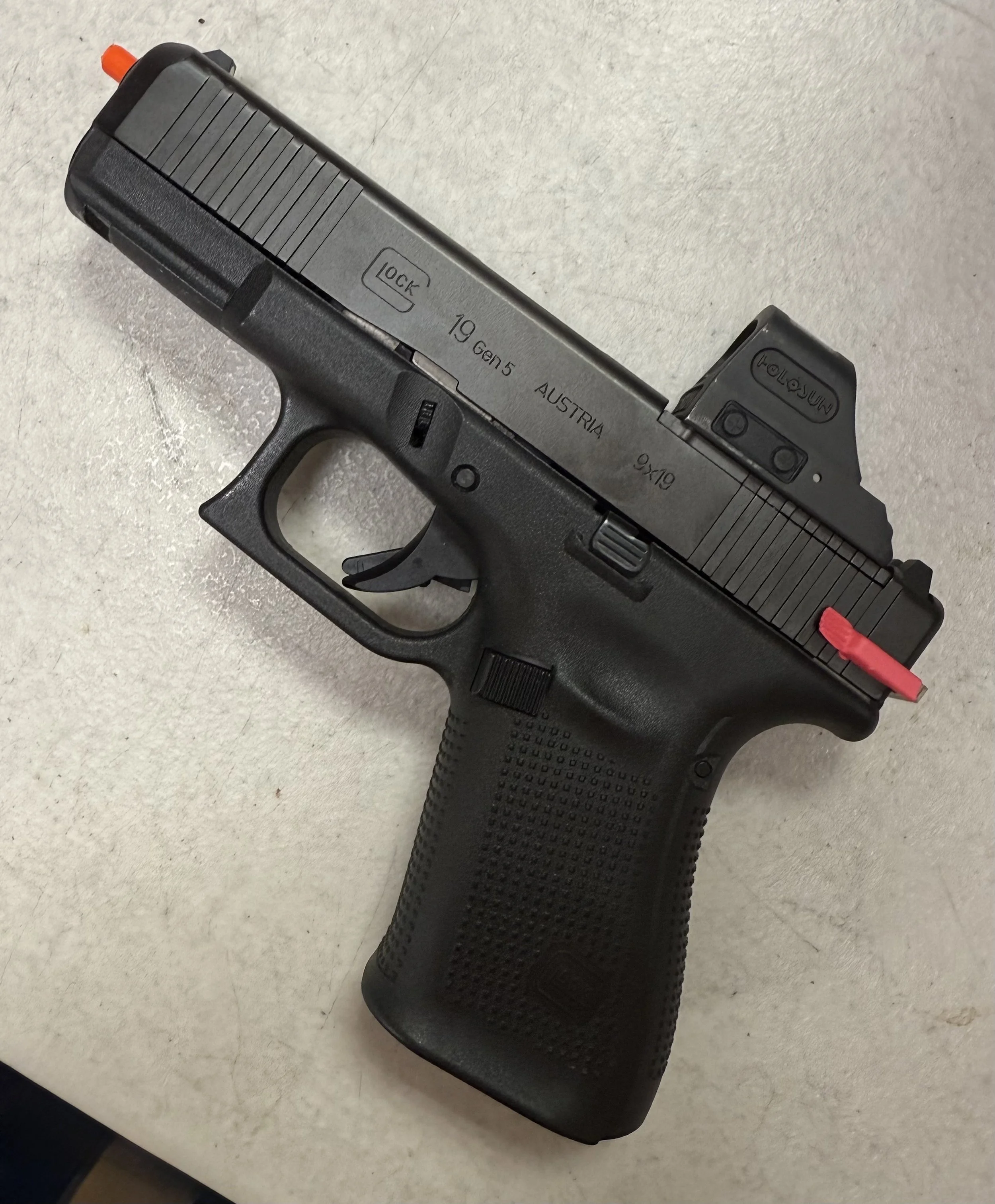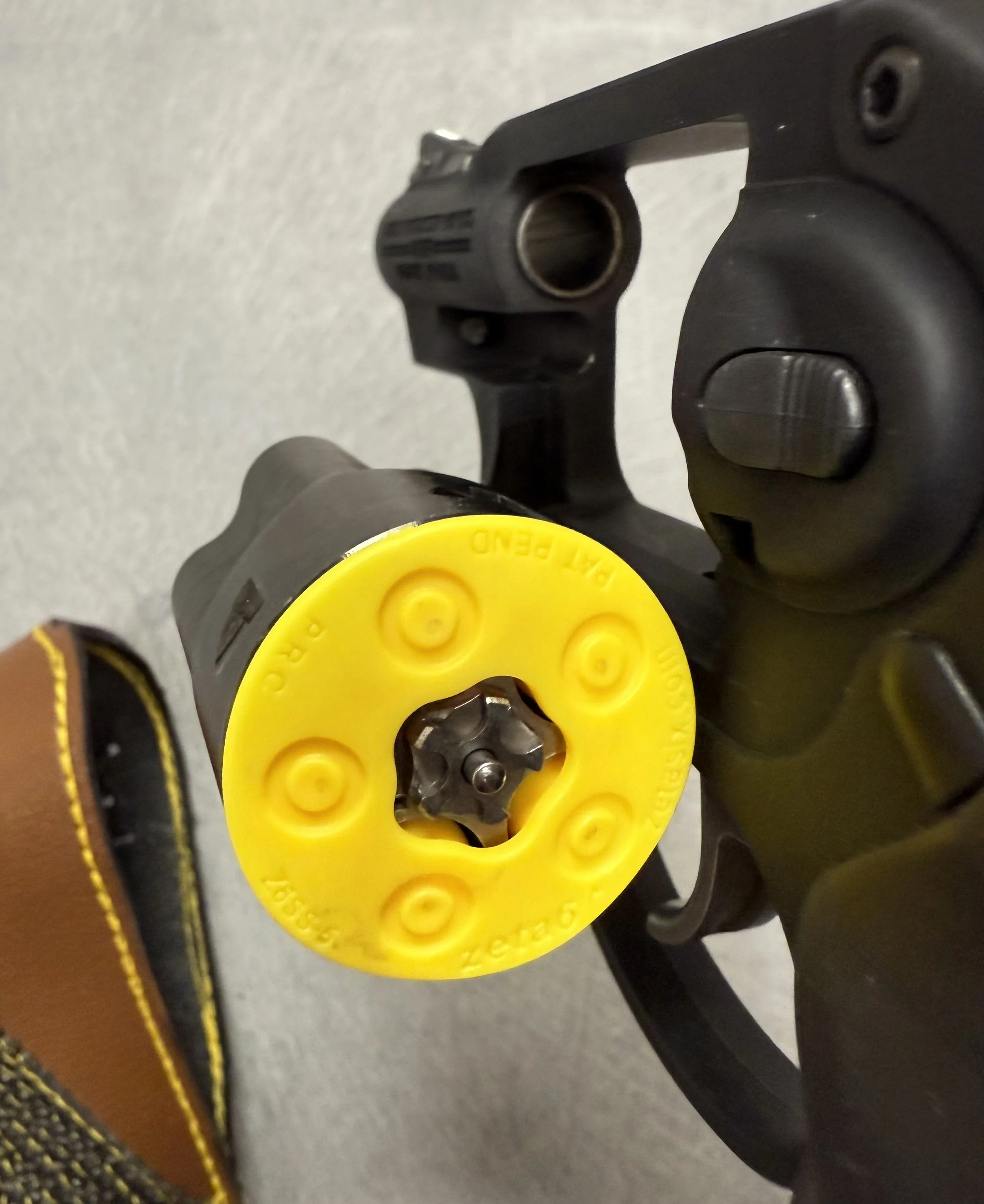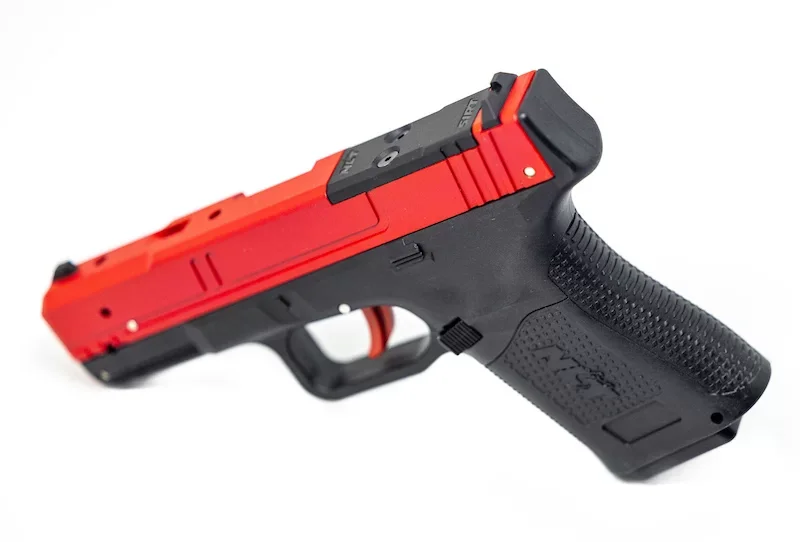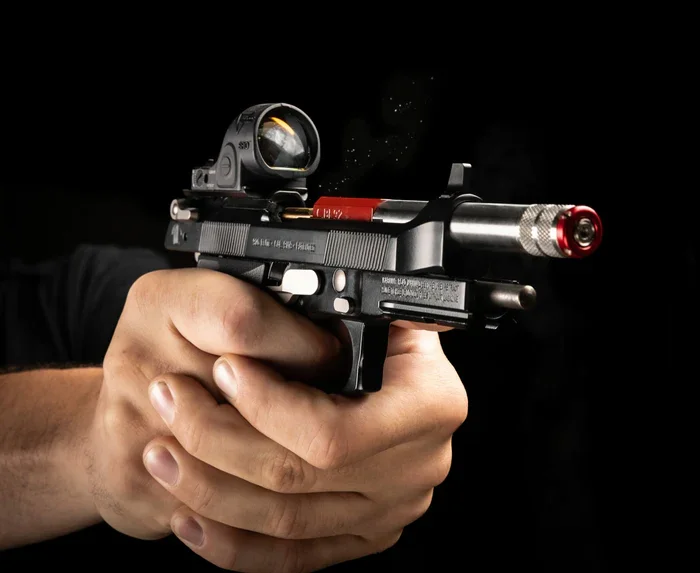Get Started With Dry Fire
If you want to improve your skills with a firearm, you should be doing dry fire (or dry practice, as it’s sometimes called). Dry fire simply means any practice done with your firearm that does not include actually firing the gun. It can include things like practicing building your grip, practicing your trigger press, working on your draw stroke, pressing the gun out and aligning your sights, and so much more. It could also include vision drills to help you process information more quickly and mental exercises designed to develop your cognitive abilities to enhance decision-making skills.
The benefit of dry practice is that you can do it at home, on your own time, without having to go to the range. All you’re missing is the “bang” (and probably recoil, but there are solutions for that). But before you get started, I highly recommend you read this book, the Dry Fire Primer by Annette Evans. It’s a quick read and lays the foundation for establishing a safe dry fire area and some best practices.
Whatever your dry practice looks like, you will likely need some tools along the way. At a bare minimum, you need your unloaded and cleared firearm and a target. You likely already have the firearm, so let’s first talk about targets.
You could use the same target you shoot at when you’re at the range. But that would take up a lot of space on your wall. Instead, I recommend you use scaled targets that can be easily printed at home. With scaled targets, you can simulate distance. For example, a 1:6 scaled target means that for every one foot of distance you stand from the target, you are simulating 6 feet of distance in real life. A 1:3 scaled target would mean for every foot of distance, you are simulating 3 feet, or 1 yard, of real world distance. This is especially handy if you don’t have a lot of space to work with.
Here are some links to pre-made scaled targets:
Citizens Safety Academy is a fantastic resource. If you haven’t trained with Aq and Tiff, you’re missing out.
Memphis Beech is another great resource. In addition to being a great instructor and shooter, he has become a good friend. He has also done online Dry Fire Seminars in the past; highly recommended!
The guys at Concealed Carry also have quite a few pre-made targets for you. The Concealed Carry Podcast is also great listening material, and their blog is full of educational material.
That should get you going. You really don’t NEED anything else; need being the keyword. But you will likely WANT to add a few other things along the way. Now that you’ve established best practices, you have your firearm, and you’ve hung some targets on the wall, let’s get into some recommended additional tools.
If you are using a semiautomatic firearm, I highly recommend the use of a Barrel Blok. Barrel Bloks are available in various handgun calibers, and they make one for rifles as well. It serves two purposes. First, it ensures that no live ammunition can be inserted into the chamber. And second, it’s a visual indicator that the gun is unloaded. I have several of them and use them regularly in my own dry practice sessions.
If you are using a revolver, then I recommend the Zeta6 SafeSnap Dry Fire Training Disc. It serves the same two purposes as the Barrel Blok. It comes in 2-packs and is available for 5-shot Smith & Wesson J-Frames, 6-shot K-Frames, and 5-shot Ruger LCRs. That covers quite a few of the most commonly available revolvers. And it will fit others as well. For example, last year, I loaned my Taurus 856 UltraLite to Claude Werner, a.k.a. The Tactical Professor, for some testing. When he returned it to me, it had a 6-shot SafeSnap in it, so it’s not limited to Smith & Wesson wheelguns.
(Quick side note: Claude Werner also helped develop the SafeSnap with Zeta6. And his blog is a tremendous resource. But you should also subscribe to his Patreon for even more awesome and educational content.)
The Zeta6 SafeSnap in my Ruger LCR.
Next up is laser training devices. There are a couple different types of laser training devices: ones that you insert into your firearm (or laser training cartridges) and replica guns. We’ll start with ones you insert into your gun.
If you are going to choose a laser training cartridge, I highly recommend going with the MantisX Laser Academy. While you can find cheaper ones on Amazon, the MantisX system is much better. In addition to the laser cartridge, it comes with a lifetime membership to an app on your phone that is filled with all kinds of drills and standards that you can use in your practice sessions. It also comes with some pre-made targets and some removable stickies for pasting them on your wall. Lastly, it comes with a tripod. The tripod is used in conjunction with the app and your phone’s camera to track your hits on the targets. And all of it comes in a nice zippered case for easy storage and transport. Overall, the MantisX Laser Academy is an incredibly useful tool.
When it comes to replica guns, the SIRT from Next Level Training is top notch. They have several versions that mimic Glock, Sig Sauer, and Smith & Wesson M&P pistols. As an added bonus, the trigger resets without having to cycle the slide (SIRT stands for Shot Indicating Resetting Trigger). These are kind of pricey in comparison to a laser cartridge, but it can be handy to have an inert training pistol that replicates your carry pistol.
Another way to get a resetting trigger is with the Dry Fire Mag. The Dry Fire Mag is a much less expensive way to get the feel of a resetting trigger while doing dry practice. Simply insert it into your handgun and get to work. It’s available for various Glock, Sig Sauer, Smith & Wesson, and Springfield pistols. The downside with the Dry Fire Mag is it will not work with a laser cartridge unless you buy their more expensive proprietary Smart model. It is less expensive than a SIRT, but requires you to use your handgun.
I mentioned earlier that there are solutions for simulating recoil. There are two really good ones that I’m aware of. The first is a laser cartridge and the second is a replica gun.
The Cool Fire Trainer is a device that you insert into your gun. However, instead of inserting it into the chamber, it replaces your barrel and recoil spring with an inert barrel. The laser threads onto the end of the barrel. You fill the barrel with CO2 from commonly available SodaMaker tanks. When you press the trigger, that gas is expelled causing the slide to cycle and the trigger to reset. Although it’s not quite the same as real recoil when live-firing the gun, it’s something and can be useful for follow-up shots.
The other way is a replica gun made by LaserAmmo. A replica gun is a great way to ensure there is no way you are using live ammunition, as it cannot be loaded. LaserAmmo makes several versions that are identical to handguns from Glock, CZ, Smith & Wesson, Sig Sauer, Beretta, and more. Like the CoolFire, there is a laser threaded onto the end of the barrel. The recoil comes from its use of commonly available Green Gas.
Lastly, there are tons of laser targets available. These are great for shooting at multiple targets or building your own shoothouse at home by placing them all over the house.
This is not an all-inclusive list of dry fire tools. There are many other options out there. But it is a list of tools I have tried and used in my own dry practice sessions. If it’s listed here, it’s because I have found value in it, and hopefully you will too. Now go practice!

